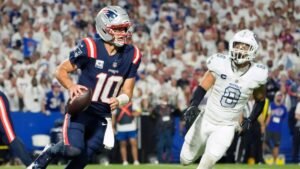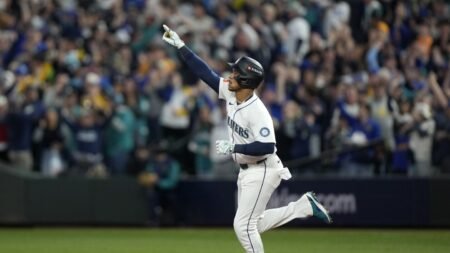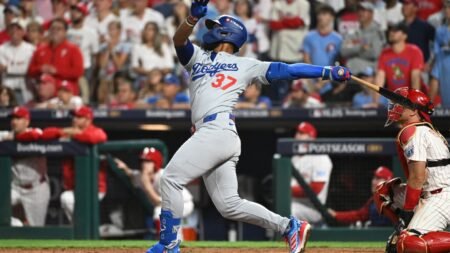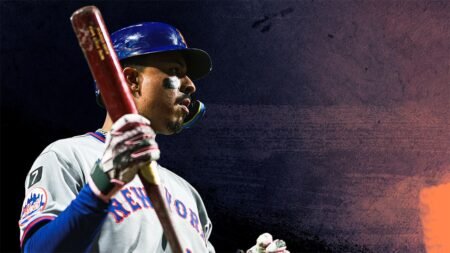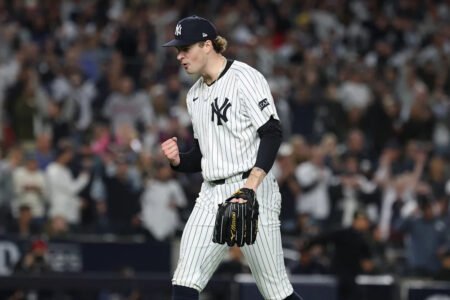We are officially in the fantasy baseball championship push.
Whether you’re trying to hold onto a top spot, pushing the leader, desperately trying to play catch up, or positioning yourself for playoff matchups, reinforcements and upside are vital this time of year.
Advertisement
Most waiver wires have been picked over though and it’s difficult to find impact players readily available in most leagues at this point in the season.
Fear not, because there are still a handful of available players that have the chance to be difference makers that help push us towards glory.
MLB: Houston Astros at New York Yankees
2025 Fantasy Baseball Top 300 update: Aaron Judge returns to top spot, Dylan Beavers and Samuel Basallo debut
Concern about Zack Wheeler’s shoulder and more closer mayhem add to the movement in this week’s update.
Here are three players that are under 40% rostered on Yahoo leagues that you should strongly consider adding.
If you want a larger list, Eric Samulski wrote his extended waiver wire piece on Sunday.
Advertisement
Bryan Abreu, RP Astros
(33% Rostered on Yahoo)
We got terrifying news late Monday night that Josh Hader was held out of a save chance because of shoulder discomfort and will be evaluated further.
While Bennett Sousa secured the save for Houston in that game, Abreu is the reliever to pick up right now just on the off chance Hader’s injury is serious.
Abreu had thrown two innings the day before, so he was likely unavailable in this game no matter what. He’s been the Astros’ primary set-up man since 2023 and has been hands down one of the best relievers in baseball over that span.
Of all qualified relievers since 2023, has thrown the second-most innings with 204 1/3. His 2.25 ERA is the sixth-lowest and his 33.9 K% is the eight-highest. He’s also in the top-20 in K-BB%, SIERA, and has a career 2.49 postseason ERA through 21 appearances. He’s nails
Advertisement
Moreover, his stuff is excellent with a fastball that sits around 97 mph with adequate ride and a devastating slider that’s been one of the best individual pitches in the league for years. Together, they’ve made him practically unhittable during his career.
Based on talent alone, Abreu is one of the best relievers in the league. If he gets runway as the full-time closer here, he could swing the championship in your league.
Isaac Collins, OF Brewers
(30% Rostered on Yahoo)
One of the best stories in baseball at the moment, Collins has come completely out of nowhere to stabilize the Brewers’ injury-riddled outfield and made himself the front-runner for National League Rookie of the Year in the process.
Advertisement
Through 97 games this season, he has eight homers, 87 combined runs and RBI, 13 stolen bases, and a .297 // .395 // .458 slash line as a lights out defender in left field.
Based on FanGraphs’ WAR, the only rookie as valuable as him so far this season is Nick Kurtz.

Screenshot 2025-08-12 at 2.13.22 PM.png
Again, this has truly come out of left field (ba-dum-tsss). He’s a 27-year-old rookie who was a ninth-round pick out of Creighton University and later waived by his original organization – the Rockies – after struggling through a full season in Double-A when he was 24. Nothing about his pedigree, background, or profile screamed breakout.
Advertisement
Collins had some interesting tools though. He stole 50 bases between two seasons at High-A and Double-AA before being cut and showed adequate power as a switch-hitter.
Yet, his calling card was a tremendous eye. He didn’t swing much and ran a 12.1% walk rate at those two levels. After picking him up, it seemed like the Brewers had him lean into this strength because his swing rate sank and walk rate rose after joining their system.
|
Year |
Org |
Level |
Swing% |
BB% |
|
2021 |
COL |
A+ |
45.9 |
11.0 |
|
2022 |
COL |
AA |
42.1 |
12.9 |
|
2023 |
MIL |
AA |
36.2 |
19.9 |
|
2024 |
MIL |
AAA |
39.2 |
14.2 |
At the same time, he continued to show solid power and athleticism while maintaining a 130 wRC+, albeit quite old for every level.
That great eye has come with him to the big leagues this season. Of every player that’s taken at least 250 plate appearances, only Juan Soto, Liam Hicks, Trent Grisham, and Kyle Tucker chase fewer pitches outside of the zone than Collins. That’s also come with both a zone-swing and zone-contact rate that are just a hair lower than league-average.
Advertisement
He also has more raw power than he’s given credit for.
A switch-hitter, Collins has a different swing from each side of the plate. As a lefty, he has one of the shortest swings in the league (6.6 feet), but with slightly above average bat speed (72.0 mph) and a max exit velocity of 109.7 mph. As a righty, it’s still a short swing (6.9 feet), but with well above average bat speed (73.9 mph) and a max exit velocity of 111.2 mph.
It all lines up as a player with plus athleticism, no platoon risk, and possibly more raw power than meets the eye despite some underwhelming batted ball metrics. We’re going on about three straight of him playing like a star and he shouldn’t be on the waiver wire in any leagues at this point.
Hurston Waldrep, SP Braves
(13% Rostered on Yahoo)
Waldrep is a completely different pitcher right now than when he made his major league debut.
Advertisement
During a two-start, seven inning sample last season, he allowed 13 earned runs and walked eight batters. It was just about as bad as a debut could go. So far this season, he’s struck out 10 batters, walked three, and allowed just two earned runs over 10 2/3 innings.
While both samples are incredibly small, this version of Waldrep seems much more sustainable.
The key reason for his struggles last year was a total lack of useful pitches in his repertoire. His splitter was nasty (and always has been), but was flanked by an awful fastball and fairly useless slider.
Combined, they accounted for nearly two-thirds of his total pitches thrown, forced just one swing-and-miss, and allowed an .842 slugging percentage. Other than above average velocity on that fastball, neither had any traits or characteristics to make us think they could ever be plus offerings.
Advertisement
So, coming back this season, he’s dramatically decreased his usage of each – especially the fastball which is almost completely absent – and replaced them with cutters, sinkers, and more curveballs to support his dominant splitter.

chart(28).png
The sinker and cutter are key, as they’ve become his primary fastballs against hitters from the right and left side of the plate, respectively. Different from last season, they’ve helped him get ahead in the count so he can better utilize his nasty splitter.
By nature, splitters are put-away pitches. They’re not meant to be thrown in the zone for strikes because they can be a bit fickle movement-wise and are objectively meatballs when a hitter can sit on one. Rather, they’re at their best when falling off the table and diving below the zone for whiffs. Pitchers need to be ahead to put pressure on the batter to force that issue.
Advertisement
Another key for Waldrep has been a mechanical change Waldrep made to keep his front leg more controlled and find better consistency in his landing spot, instead of kicking that knee up near his chin like he did in the past. Eric Samulski highlighted this (and more about Waldrep) in his Pitcher News column last week as well as the work by Guarav Vedak of Baseball Prospectus and Lindsay Crosby on their substack.
All in all, Waldrep still has a plus-plus put-away pitch and now a significantly deeper array of other options to put himself in position to use that put-away pitch. Braves’ manager Brian Snitker confirmed he’ll get another start in the rotation too.
Just be advised that he’s already thrown a career-high 101 innings across all levels this season. So we’ll see how far he’s pushed.
Read the full article here


